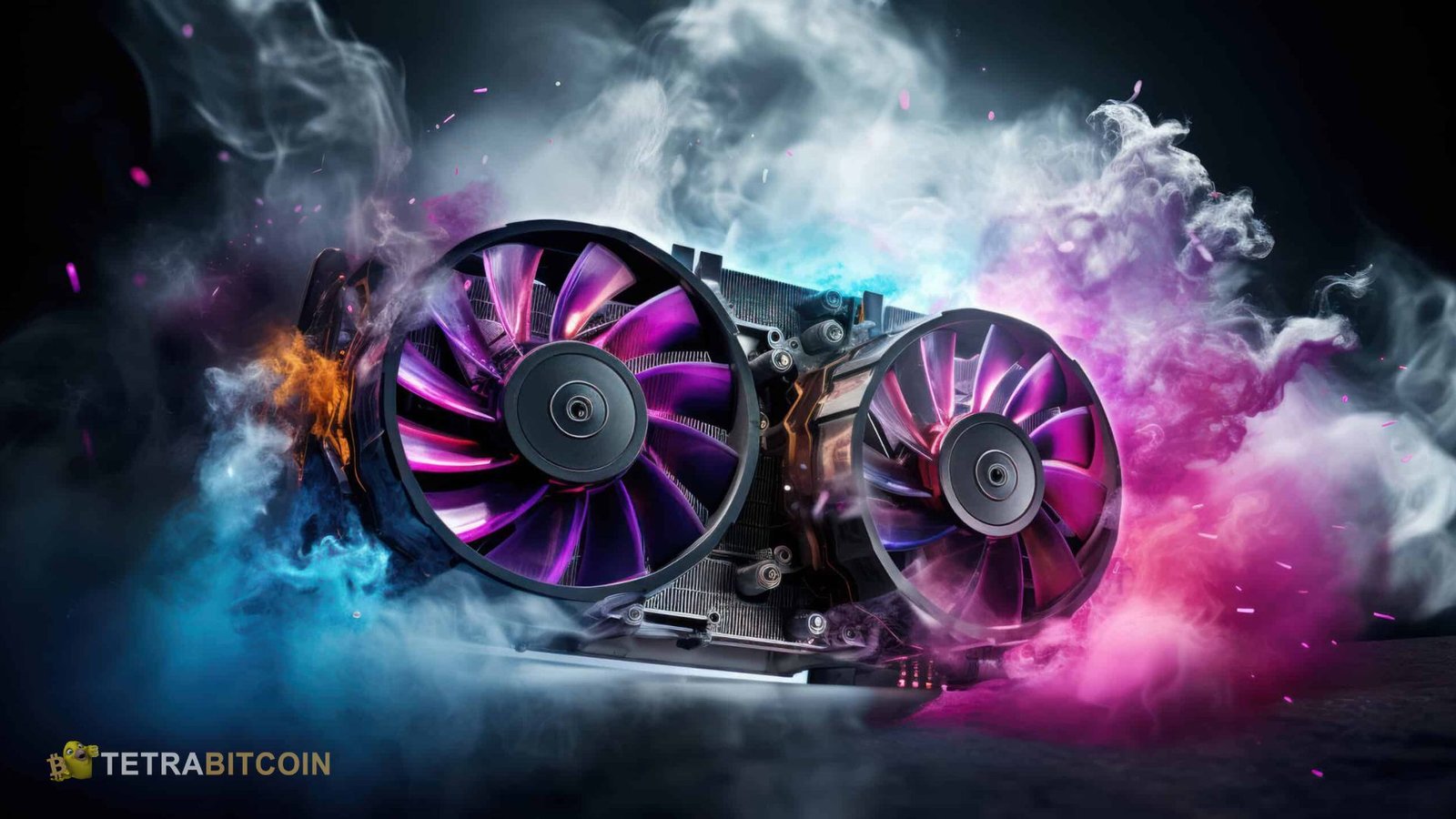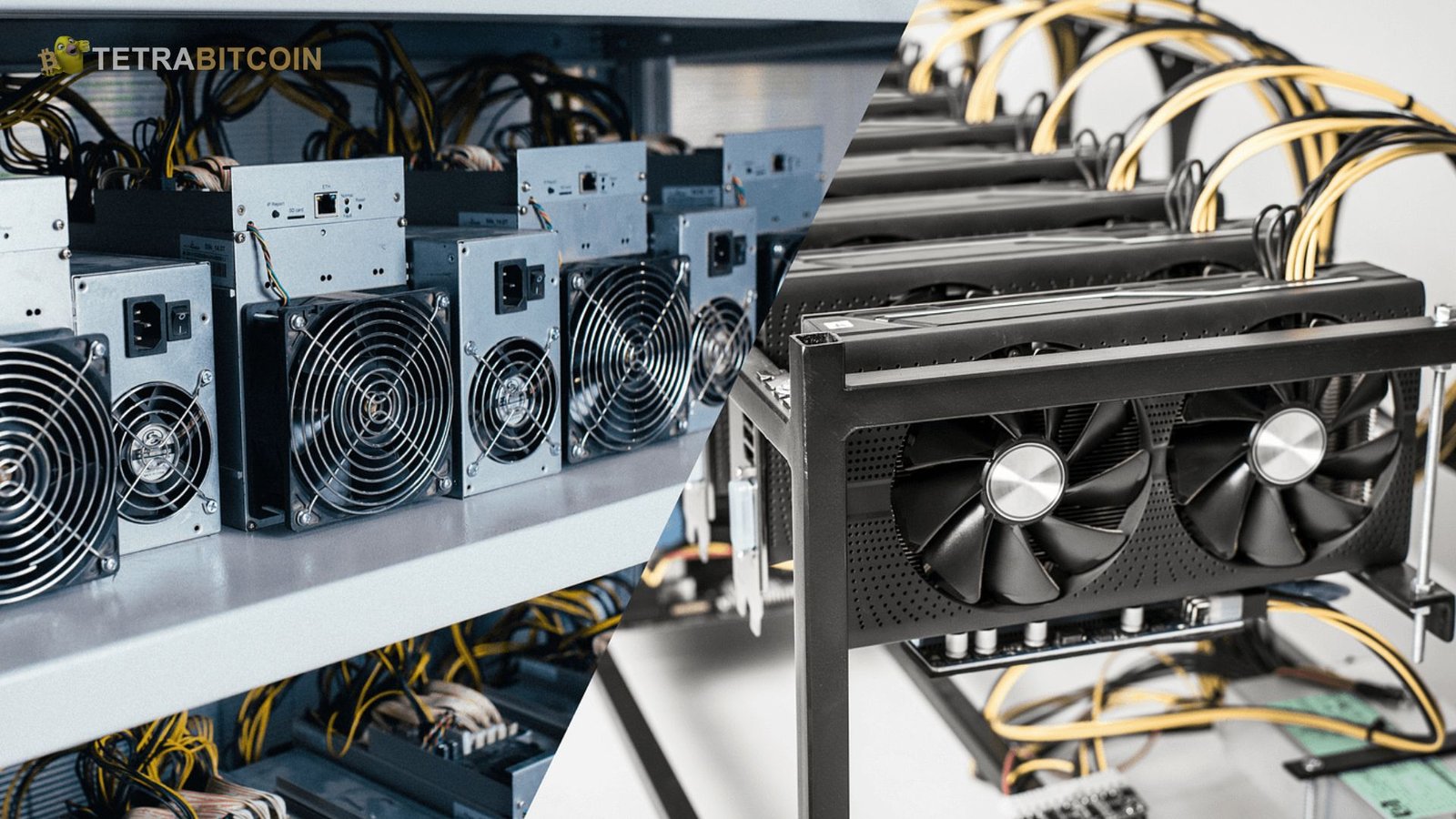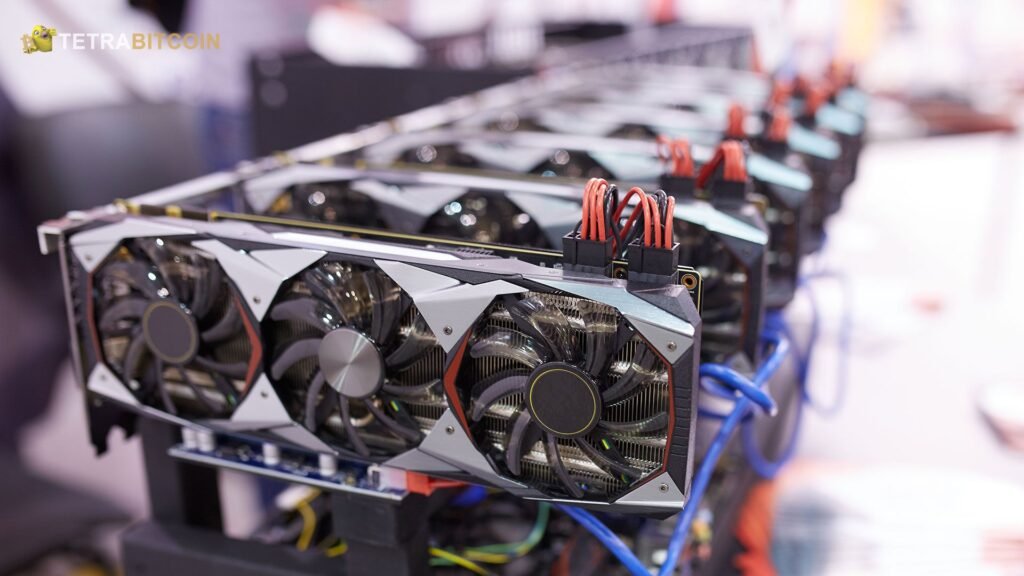Bitcoin GPU Mining: Since its launch in 2009, the first cryptocurrency, Bitcoin (BTC), has grown exponentially. Bitcoin mining used to be easy enough for anyone with a basic CPU, but miners upgraded to GPUs as the network difficulty rose. Nevertheless, specialized hardware such as ASICs (Application-Specific Integrated Circuits) has revolutionized the Bitcoin mining industry, rendering GPU mining obsolete. Nevertheless, Bitcoin GPU mining is still an important part of the cryptocurrency revolution’s backstory. This article will examine Bitcoin GPU mining from its inception to its present day and beyond, looking closely at the reasons behind the method’s decline from its heyday.
The Early Days of Bitcoin Mining
In 2009, Satoshi Nakamoto, the mysterious creator of Bitcoin, launched the Bitcoin network, and anyone with a computer could participate in the mining process. At that time, mining was conducted using CPUs, as the computational demands were minimal. Mining essentially involves solving complex mathematical puzzles, known as cryptographic hashes, to validate transactions and add them to the blockchain. As a reward, miners receive newly minted Bitcoins.
As Bitcoin gained popularity, more participants joined the network, and the difficulty of these puzzles increased. By 2010, miners realized that CPUs were no longer sufficient to mine Bitcoin efficiently. The natural next step was the transition to GPU mining. Originally designed to render complex graphics for gaming and other applications, GPUs proved to be much better suited for the highly parallelized computations required for Bitcoin mining.
The Rise of GPU Mining
Between 2010 and 2013, GPU mining dominated the Bitcoin ecosystem. Graphics cards, particularly from manufacturers like Nvidia and AMD, were highly effective in solving the SHA-256 cryptographic hash algorithm used in Bitcoin mining. GPUs offered an exponential increase in mining performance over CPUs, and many miners built custom rigs with multiple GPUs to maximize their mining capabilities.
This was the golden age of GPU mining for Bitcoin. Anyone with enough technical knowledge could set up a mining rig and start mining Bitcoin from the comfort of their own home. During this time, miners enjoyed significant profits, especially as the value of Bitcoin began to rise rapidly. Enthusiasts shared tips, hardware configurations, and software solutions across online forums, and Bitcoin mining became a hobby for many tech-savvy individuals.
However, this period did not last long. As the Bitcoin network grew, so did the mining difficulty, making it harder for individual miners to keep up with the rising computational power required to mine a single Bitcoin. In response, mining hardware continued to evolve.
The Emergence of ASICs and the Decline of GPU Mining
The Bitcoin mining landscape underwent a major shift in 2013 with the introduction of ASICs. ASICs are custom-designed chips specifically built for mining Bitcoin. Unlike GPUs, which are general-purpose processors, ASICs are highly specialized and much more efficient at performing the SHA-256 algorithm required for Bitcoin mining.
ASICs were a game-changer. They could deliver orders of magnitude more processing power than GPUs while consuming less electricity. As ASICs flooded the market, GPU miners quickly found themselves unable to compete. The profitability of GPU mining for Bitcoin rapidly declined, and by 2014, GPU mining for Bitcoin was all but dead.

Miners who had invested heavily in GPU hardware were forced to switch to other cryptocurrencies that were still GPU-mineable, such as Litecoin, Ethereum, and other altcoins. These coins used cryptographic algorithms (such as Scrypt and Ethash) that remained resistant to ASIC dominance for several years. In contrast, Bitcoin mining became dominated by large mining farms equipped with ASICs, making it virtually impossible for small-scale miners to compete.
Why is GPU Mining No Longer Profitable for Bitcoin?
There are several reasons why GPU mining is no longer a viable option for Bitcoin miners today:
- ASIC Domination: ASICs are vastly more efficient at mining Bitcoin than GPUs. A single ASIC miner can outperform an entire rig of GPUs while consuming less power. This efficiency makes it nearly impossible for GPU miners to compete in profitability.
- Increased Network Difficulty: Bitcoin’s mining difficulty adjusts approximately every two weeks to ensure that new blocks are added to the blockchain roughly every 10 minutes. The difficulty increases as more computational power (hashrate) is added to the network, making it harder for less powerful hardware like GPUs to mine Bitcoin effectively.
- Electricity Costs: Mining is an energy-intensive process. The high power consumption of GPU mining rigs, combined with their relatively low efficiency in mining Bitcoin, makes them unprofitable for most miners compared to ASICs. In regions where electricity is expensive, the cost of running a GPU mining rig can exceed the value of the Bitcoin it produces.
- Industrial-Scale Mining: The rise of industrial-scale mining operations, particularly in countries with cheap electricity like China (until the 2021 crackdown) and, more recently, in the U.S., has further squeezed out small-scale miners. These large operations benefit from economies of scale, access to cheap power, and high-end ASIC hardware, leaving little room for individual GPU miners to compete.
The Legacy of Bitcoin GPU Mining
While GPU mining is no longer feasible for Bitcoin, its impact on the cryptocurrency ecosystem remains profound. GPU mining played a critical role in the early years of Bitcoin, allowing a wide range of people to participate in the network and contribute to its growth. This decentralized and democratized approach to mining was a key factor in Bitcoin’s initial success and widespread adoption.
Moreover, the GPU mining phase helped to foster a culture of innovation and experimentation within the cryptocurrency community. As GPU miners moved away from Bitcoin, they turned their attention to altcoins like Litecoin and Ethereum. The lessons learned from Bitcoin mining were applied to these new projects, helping to drive the growth of the broader cryptocurrency ecosystem.
Future Outlook
For those hoping to mine Bitcoin with GPUs, the prospects look bleak. ASIC technology has advanced to the point where it is unlikely that GPUs will ever again be competitive for mining Bitcoin. The trend toward increasingly powerful and efficient ASICs shows no signs of slowing down. As long as Bitcoin continues to use the SHA-256 algorithm, ASICs will remain the dominant hardware for mining.
That said, the story of GPU mining is far from over. While Bitcoin is no longer viable for GPU miners, many other cryptocurrencies still rely on GPU-friendly algorithms. For example, Ethereum, until it transitioned to Proof of Stake in 2022, was one of the most popular cryptocurrencies mined using GPUs. Even today, several altcoins use algorithms resistant to ASICs, keeping GPU mining alive in certain corners of the crypto world.
Additionally, some proponents within the Bitcoin community have suggested that future forks or alternative versions of Bitcoin could be designed to be more ASIC-resistant, potentially reviving the role of GPUs in the Bitcoin mining ecosystem. However, such proposals remain highly speculative and would likely face significant opposition from the current mining community.
Conclusion
Bitcoin GPU mining may be a thing of the past, but its legacy lives on. The transition from CPU to GPU mining marked a pivotal moment in Bitcoin’s early development, enabling the network to grow and evolve. While GPUs have since been rendered obsolete by the rise of ASICs, they remain an essential part of the broader cryptocurrency mining landscape. For now, however, anyone looking to mine Bitcoin with a GPU must focus on other cryptocurrencies or alternative ways of participating in the Bitcoin ecosystem.

